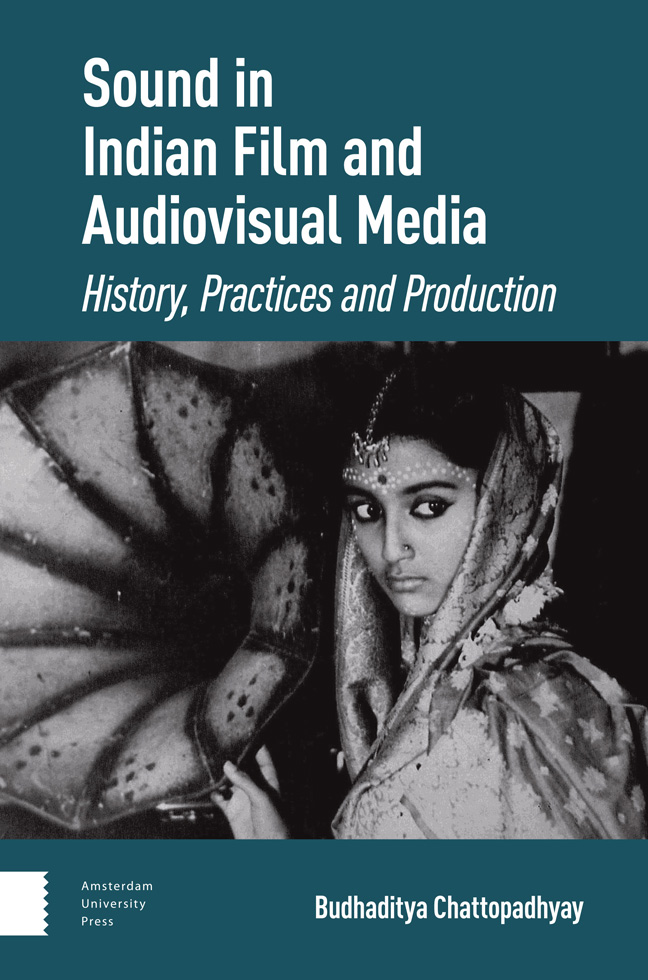Book contents
- Frontmatter
- Contents
- Acknowledgements
- 1 Introduction
- 2 The Technological Frameworks
- 3 Direct Sound and Early Talkies
- 4 Sound of the Golden Age
- 5 Tracing the Sound in Satyajit Ray’s Film-works
- 6 Popular Films from the Dubbing Era
- 7 Parallel Sounds, Radical Listening – Part I
- 8 Sholay, Stereo Sound and the Auditory Spectacle
- 9 The Advent of Digital Sync Sound
- 10 The Surround Revolution
- 11 Sound in the Audiovisual Media Arts
- 12 Parallel Sounds, Radical Listening – Part II
- 13 A Concluding Voiceover
- Bibliography
- Filmography
- Index
10 - The Surround Revolution
Published online by Cambridge University Press: 20 February 2024
- Frontmatter
- Contents
- Acknowledgements
- 1 Introduction
- 2 The Technological Frameworks
- 3 Direct Sound and Early Talkies
- 4 Sound of the Golden Age
- 5 Tracing the Sound in Satyajit Ray’s Film-works
- 6 Popular Films from the Dubbing Era
- 7 Parallel Sounds, Radical Listening – Part I
- 8 Sholay, Stereo Sound and the Auditory Spectacle
- 9 The Advent of Digital Sync Sound
- 10 The Surround Revolution
- 11 Sound in the Audiovisual Media Arts
- 12 Parallel Sounds, Radical Listening – Part II
- 13 A Concluding Voiceover
- Bibliography
- Filmography
- Index
Summary
Abstract: The tenth chapter expands the discussion of the digital realm of sound production in Indian cinema towards the ensuing surround sound revolution. The spatial aspect of surround sound mixing and reproduction is becoming a key element in contemporary film production. As interest in Indian cinema flourishes via a healthy distribution market, both locally and globally, fostered by OTT platforms, the implementation of spatial audio innovations such as Dolby Atmos needs to be upheld to maintain this resurgent audience. In this chapter, representative Indian films that have been using spatial audio from 5.1 to the present era of Dolby Atmos are discussed to study their mimetic approach to site-specificity and the spatial awareness such films encourage.
Keywords: surround sound, Indian cinema, digital technology, Dolby Atmos, OTT platforms
The Advent of Surround Sound
In the 1970s and 1980s, Dolby Labs in the USA, run by Ray Dolby, improved the cinematic sound experience. Noise reduction, high-fidelity sound, and surround sound mixing, reproduction, and projection all became industry standards. Gianluca Sergi termed the Dolby company’s intervention in film as the beginning of an era in his book The Dolby Era (2004). Although it could be argued that a film technology company cannot instigate a revolutionary era, this technology emerged due to a distinct interest in spatial audio experiences.
This wave of experimentation with spatial audio arrived later in India due to mainstream film conservatism. 1942: A Love Story (Chopra, 1994) was one of the earliest Indian films to use a Dolby Sound format, becoming a landmark film in surround sound production. The film’s sound was mixed at the Dolby SR facility in London. Romantic thriller Rangeela (‘Colourful’, Varma, 1995) followed shortly thereafter and became one of few Indian films mixed and released in the Dolby SR format. The company subsequently advanced Dolby Digital technology, now used around the world.
In India innovative and business-savvy filmmakers such as Ram Gopal Varma led the way in incorporating new technologies such as Dolby Digital into their work. Varma utilized Dolby Digital, using its noise reduction and surround sound capabilities, in Daud (Run, 1997). Verma incorporated such technologies to produce a cleaner, gentrified and ‘corporate’ sound design in cinema, in which electronic music with capacity to render low frequency tones played a major role. Verma’s film sound work is remarkable in its ability to use sound and music for psychological manoeuvring of his audiences and listeners.
- Type
- Chapter
- Information
- Sound in Indian Film and Audiovisual MediaHistory, Practices and Production, pp. 169 - 182Publisher: Amsterdam University PressPrint publication year: 2023



